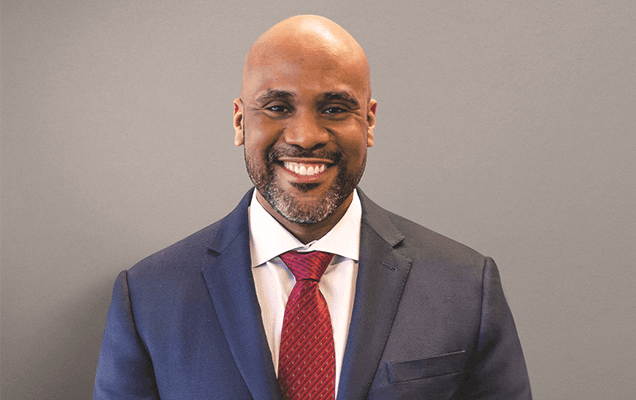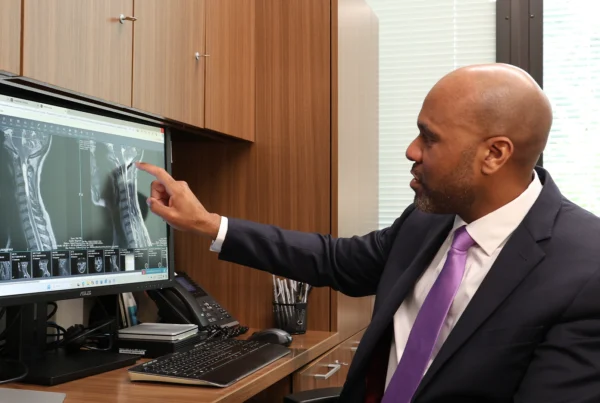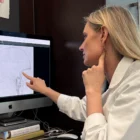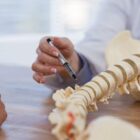Do you have neck pain that shoots down your arms? Or back pain that goes down your legs? If everyday movements hurt and other treatments haven’t helped, narrow spine surgery might be a good option.
What Causes Spinal Narrowing?
Spinal narrowing occurs when the space around the spinal cord narrows, putting pressure on the nerves in the neck or lower back. This often occurs during the natural aging process
Your neck has seven bones (vertebrae) that support your head and let you move. The neck (cervical spine) protects the spinal cord where it leaves the brain. When narrowing happens here, it can affect signals traveling to your arms, hands, and sometimes legs.
Your low back or lumbar spine has 5 bones that support the entire upper body and allow you to bend and twist. These bones protect the nerves that go to the legs. When narrowing happens here, it can affect signals going to the legs and feet.
When other treatments don’t work, surgery can create more space for your pinched nerves. This can help you get back to daily activities with less pain.
Signs and Symptoms You Might Notice
Spinal narrowing usually develops slowly, often from bone spurs, thick ligaments, or aging discs. Your body will send warning signs when nerve pressure becomes too much.
Neck (Cervical) Symptoms:
- Neck pain that may be sharp or dull
- Pain, tingling, or numbness down your arms to your hands
- Hand weakness or trouble with fine tasks like buttoning shirts
- Balance problems or walking difficulties in severe cases
- Neck stiffness or limited movement
- Headaches that start at the back of your head
Lower Back (Lumbar) Symptoms:
- Lower back pain that won’t go away
- Sharp, burning pain from your buttocks down your legs
- Numbness or tingling in your feet and legs
- Muscle weakness that gets worse with activity
- Pain relief when you sit or lean forward
Neck symptoms often worsen when looking up or keeping your neck in one position. Lower back symptoms often worsen when standing or walking and feel better when sitting down.
How Doctors Diagnose the Problem
If you have spinal narrowing, it starts with your doctor asking about your symptoms. Before discussing treatment options, spine doctors need to understand how the narrowing affects your daily life.
Imaging Tests
To find exactly where and how bad the narrowing is, doctors use several tests:
MRI: Shows detailed pictures of soft tissues using magnets, including:
- Soft tissues X-rays can’t see
- The exact spot where nerves are being squeezed
- Swelling around nerves
- Disc problems
- How narrow the spinal canal has become
CT Scans: Combine multiple X-rays to show:
- Views of your spine’s bones from different angles
- Bone spurs are causing narrowing
- Joint overgrowth
- Calcium buildup in ligaments
- Spine stability
X-rays: Check for:
- Overall spine alignment
- Signs of instability when bending
- Age-related changes in bones
- Narrowing between spine segments
Myelogram: A test where dye is injected before a CT scan or X-ray to:
- Highlight the spinal cord and nerves
- Show pressure not visible on standard images
- Help evaluate complex cases
Nerve Tests (EMG): Measure electrical activity in muscles and nerves to:
- Check how much the nerves are damaged
- Tell the difference between spinal narrowing and other conditions
- Guide decisions about which nerves need treatment
Doctors use all this information to create a treatment plan just for you.
It's time to get back
to doing what you love.
Treatments to Try Before Surgery
Many people get relief without needing surgery. A complete non-surgical approach usually starts with less invasive treatments:
Physical Therapy and Exercise
For Neck Problems:
- Strengthening neck and upper back muscles
- Gentle stretches to improve neck flexibility
- Posture training to reduce strain
- Teaching proper desk and phone ergonomics
- Exercises to improve shoulder blade stability
For Lower Back Problems:
- Strengthening core muscles that support your spine
- Improving flexibility in your back and hips
- Teaching proper body movements to reduce spine stress
- Creating a home exercise routine just for you
- Including gentle activities like swimming or walking
Physical therapists design exercises specifically for spinal narrowing to open the spaces between vertebrae and reduce nerve pressure.
Pain Management Options
Several medications can help manage inflammation and pain:
- Over-the-counter pain relievers like ibuprofen or naproxen
- Prescription anti-inflammatories for worse symptoms
- Muscle relaxants for muscle spasms
- Nerve pain medications for leg or arm pain
- Short-term pain relievers for flare-ups
Your doctor will help find the proper medications based on your symptoms and health history.
Spinal Injections
Targeted injections can deliver anti-inflammatory medication directly to the pain source:
- Epidural steroid injections place medication around irritated nerve roots
- Joint injections address pain from arthritic joints between vertebrae
- Nerve blocks temporarily stop pain signals from specific nerves
These procedures are done as outpatient visits using X-ray guidance for precise placement. Some people experience months of relief after injections.
Lifestyle Changes
Simple changes in daily habits can significantly reduce symptoms:
- Weight management to decrease pressure on the spine
- Workplace and home improvements for better posture
- Changing activities to avoid triggering symptoms
- Learning proper lifting techniques
- Wearing supportive shoes and being aware of posture
Alternative Therapies
Some people benefit from complementary approaches:
- Acupuncture to reduce pain and muscle tension
- Massage therapy for muscle spasms
- Chiropractic care (with appropriate caution)
- Heat and cold therapy for symptom management
This multi-part approach often provides enough improvement for mild to moderate spinal narrowing to avoid surgery.
When Surgery Becomes Necessary
Surgery becomes worth considering when symptoms significantly impact your daily life.
For Neck Problems:
- Ongoing arm pain, numbness, or weakness
- Hand coordination becomes noticeably worse
- Problems with balance or walking
- Simple activities like writing become difficult
- Imaging shows significant spinal cord compression
For Lower Back Problems:
- Difficulty walking even short distances
- Frequent stops to sit and relieve pain
- Worsening leg weakness
- Bladder or bowel function is affected (a medical emergency)
Surgery becomes more viable when:
- Pain medications no longer provide meaningful relief
- Quality of life declines despite all treatments
- Neurological symptoms worsen
The goal of surgery is simple: to create more space for compressed nerves and restore normal nerve function.
Modern Surgical Techniques
Today’s spine surgery uses minimally invasive techniques with faster recovery and fewer complications.
Neck Procedures:
- Anterior Cervical Discectomy and Fusion (ACDF): This procedure removes the damaged disc and fuses the vertebrae together. It is highly successful for arm pain.
- Cervical Artificial Disc Replacement: Maintains neck motion by replacing the disc instead of fusing.
- Posterior Cervical Laminoforaminotomy: Removes a small portion of bone from the back of the spine to relieve pressure.
- Minimally Invasive Cervical Laminoplasty: Enlarges the spinal canal to relieve spinal cord pressure without reducing motion.
Lower Back Procedures:
- Enhanced Laminectomy: Removes part of the vertebra while preserving stabilizing structures.
- Precision Foraminotomy: Enlarges openings where nerves exit the spine.
- Endoscopic Decompression: Ultra-minimally invasive, sometimes done with local anesthesia.
Advanced Stabilization Options:
- Minimally Invasive Fusion: Uses expandable spacers placed between vertebrae.
- Percutaneous Fixation: Advanced navigation places screws with minimal muscle disruption.
- Robotic-Assisted Surgery: Computer-guided precision for implant placement.
Benefits of Modern Spine Surgery
Minimally invasive spine surgery offers:
- Less tissue damage and post-op pain
- Minimal blood loss and reduced infection risk
- Shorter hospital stays (many go home the same day)
- Faster return to normal activities
- Preservation of spinal muscle function
Potential Risks
While complications are rare, potential risks include:
- Infection
- Bleeding or blood clots
- Anesthesia reaction
- Persistent pain or incomplete relief
- Nerve or spinal cord injury
- Hardware issues (if fusion is done)
- Adjacent segment degeneration over time
Specialists take steps to reduce these risks and discuss them in detail during pre-surgical visits.
Recovery After Spine Surgery
Recovery differs by procedure but follows common milestones.
Neck Surgery Recovery:
- Most go home within 24 hours
- May wear a cervical collar initially
- Temporary swallowing or voice issues may occur
- Desk work often resumes in 1–2 weeks
- Driving resumes once mobility returns and pain meds are reduced
- Full recovery typically takes 3–6 months
Lower Back Surgery Recovery:
- Walking starts within hours
- Light movement is encouraged in the first 2 weeks
- No bending, lifting, or twisting for several weeks
- Light work resumes in 4–6 weeks
- Physically demanding work may need 8–12 weeks
Your recovery plan is customized to your health, procedure, and goals—and often includes physical therapy.
Next Steps
If your symptoms haven’t improved with conservative care, a consultation with a spine specialist may be your next best step.
FAQs
Am I a good candidate for minimally invasive spine surgery?
Yes, if you have nerve compression that hasn’t improved with non-surgical care. Your age, health, and condition specifics matter.
Will insurance cover spine surgery?
Most plans, including Medicare, cover medically necessary spine surgery. Your care team will confirm coverage in advance.
How quickly will I feel relief after surgery?
Leg pain often improves quickly. Back or neck pain may take weeks. Full recovery varies by procedure.
Could my spine narrow again after surgery?
Surgery can’t stop aging, so narrowing at other levels is possible—but many never need further treatment.
What are the success rates?
Success rates vary depending on individual factors, including the specific condition, procedure type, and overall health. Studies show that 70-80% of appropriately selected patients experience significant improvement in symptoms and function following surgery.

About Dr. Gaetan Moise
Dr. Gaetan Moise is an accomplished neurosurgeon in North Jersey and is a proud member of Neurosurgeons of New Jersey, practicing out of their Ridgewood office conveniently located on East Ridgewood Avenue. His compassionate evidence-based, results-driven approach is guided by his desire to help patients achieve happy, pain-free lives through non-surgical and appropriate surgical solutions. Dr. Moise’s techniques are influenced by the advancements in minimally invasive surgery technology as well as advances in the understanding of the intricacies of the nervous system, brain, and spinal cord. Dr. Moise is a member of The Congress of Neurological Surgeons and the American Association of Neurological Surgeons. He is accepting new patients.






